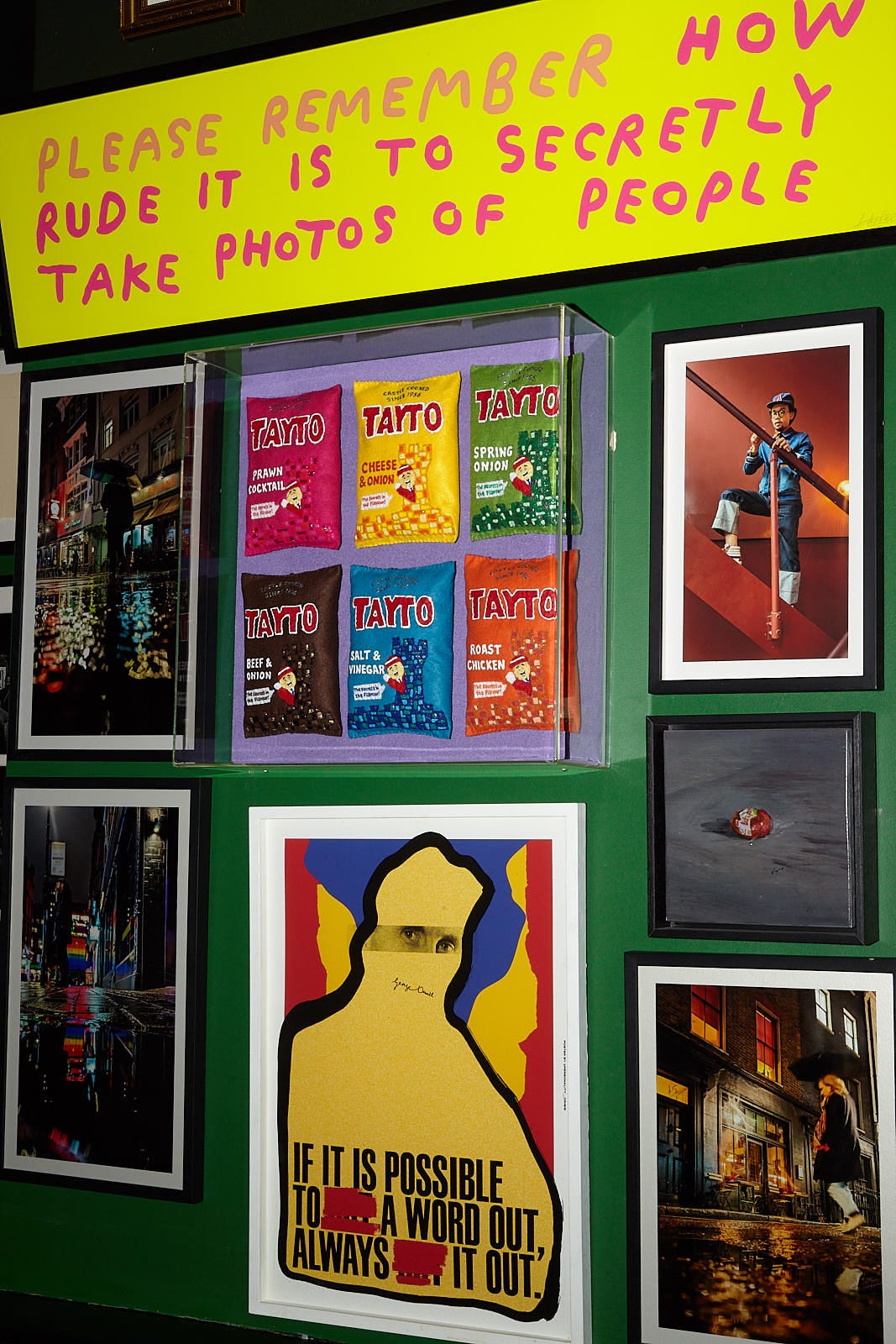Trial and Éire
On the new Irish cuisine in London. By Karl McDonald. Photography by Michaël Protin.
Good morning and welcome back to Vittles Restaurants. Today’s essay on Irish cuisine finding a new identity across London is by the writer Karl McDonald.
Issue 1 of our magazine is now back in stock and you can order through our website here. If you would like to stock it at your shop or restaurant, please order via our distributor Antenne Books by emailing maxine@antennebooks.com and mia@antennebooks.com.
If, in your yearning pursuit of something real in a world of exaggeration, profit and error, you seek authenticity, why not consider Irishness? We (I’m Irish, I should tell you straight away) have been hard at work providing a counterpoint to Englishness for a rollercoaster 850 years. To your rationality, we have offered romance. To your sense of order, we have offered heartswell rebellion in forms ranging from a pitched early-modern army to the post-punk revival. We’re still here, we’re still different and we’re interested, at last, in seeing if you would like to try our humble cuisine.
On the margins, the idea of Irishness as an authentic characteristic of food is already visible in London, a city whose limitless choices could see you eat gold-flaked steak for dinner one night, then arepas, pie and mash or chaat (all for a hundredth of the price) the next.
Most visibly, the Guinness marketing team has made sure many people know the difference between a good and a bad pint. But the roots run deeper than that. On Broadway Market and New Cross Road, pubs sell Murphy’s - a Cork stout little seen even in Dublin - presumably for those wishing to display their discernment. At the chic Café Deco in Bloomsbury and at Violet Cakes in Hackney – which provided Meghan Markle’s wedding cake – Barry’s Tea is on the menu.
Neither stout nor tea are Irish inventions and, though I will be headlocked for saying it, both are products with English equivalents that have equal or better heritage. But Guinness and Barry’s can rely on a power that Tetley’s (tea or ale) cannot: like the Irish in general, they’ve been around forever, but they’re still different.
Something is happening here. Led by bold multinational brands (I should mention the butter here too) and brave expatriate chefs, Irish cuisine is beginning to establish itself at last, helping to slough off some of the cultural cringe at spending the eating-out budget on an Irish meal instead of, for example, Italian or Korean or tapas. We have found, or are finding, a cuisine.
What is Irish food?
Resistant to ingredient variety and without any particularly unique flavours, Irish cuisine is hard to pin down in its ideal form. Those who look into the subject (such as Margaret Hickey, who wrote 2018’s Ireland’s Green Larder) crash quickly into a widespread squeamishness about things the French would consider the best locally available ingredients. This means that, despite being a large island in the north Atlantic, seafood is often regarded with suspicion in Ireland; in its damp and verdant landscape, mushrooms other than button are largely ignored; despite its proliferation of cattle and sheep, offal is mostly eschewed.
Tomás Ó Criomhthain, a monolingual Irish-speaking writer born in the 1850s on the now-uninhabited Great Blasket, gives a good sense of the traditional attitude, even among those barely eking out subsistence. In his book The Islandman (1937), much of the diaristic narrative is taken up with fishing and harvesting from the sea, but the produce is eaten only when it can’t be helped. He and his subjects cut seaweed and gather mussels for manure; they catch mackerel and lobsters for market. Nevertheless, at home they are ‘served with a three-cornered lump of bread and a saucepan of milk’ after a day’s work. ‘We didn’t care for fish,’ Ó Criomhthain says. ‘We were sick of it.’
Irish restaurants usually ignore the common reticence around the likes of seafood and offal to some degree, depending on what they’re trying to do. The Allens at Ballymaloe, probably the centre point of Irish ‘country cooking’ across several generations, serve sole and monkfish. Bastible, at the avant-garde end in Dublin, serves ‘mushroom custard’. The Pig’s Ear, an experimenter with tradition, offers ‘tongue ’n’ cheek kidney pudding’.
In his Phaidon Irish Cookbook, Galway chef JP McMahon produces a semi-credible idea of Irish cuisine that includes everything from cottage classics like bacon and cabbage to ambitious projections of an imaginary cuisine, like deep-fried rabbit with wild garlic mayonnaise or charred octopus with seaweed glaze. The ingredients might be authentic, but a focus group in Westmeath would take a while to guess they were Irish, I’d suggest.
Beyond a few elements – local cheeses, named-farmer beef, named-cove oysters, soda bread – the centre does not really hold in these efforts. While the Greeks don’t need to explicitly state that octopus is part of their heritage, the delineation of Irish cuisine is sometimes hard to see. But ‘Modern Irish’ cuisine is somewhere to be found – just like a constellation in a sea of scattered stars, it’s not always easy to tell where. Taking it off the island of Ireland and placing it against the foods of the world might be helping to clarify things and shape a new identity.





